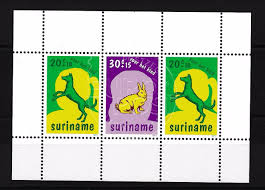Exploring Suriname: Culture, Biodiversity, and Economy

Introduction
Suriname, a small nation located on the northeastern coast of South America, has been gaining attention for its rich cultural diversity, unique ecosystems and emerging economic potential. Covering just over 163,000 square kilometres, it is the smallest country in South America, yet it boasts a wealth of natural resources and vibrant communities. Understanding Suriname’s significance is crucial, as it plays a pivotal role in the region’s ecological balance and cultural tapestry.
Culture and Society
Home to a population of approximately 600,000 people, Suriname is known for its multicultural society comprising various ethnic groups including Indigenous peoples, Africans, Indians, Javanese, Chinese, and Europeans. This diverse heritage can be observed in the nation’s languages, religions, and festivals. The official language is Dutch, a remnant of its colonial past, while several other languages reflect its multicultural identity.
Suriname celebrates various festivals throughout the year, such as Holi, Diwali, and traditional music festivals, showcasing its cultural richness. The capital city, Paramaribo, is a UNESCO World Heritage site, known for its well-preserved colonial architecture and vibrant local markets.
Biodiversity and Environment
Suriname is often referred to as a biodiversity hotspot. About 93% of the country is covered in tropical rainforest, which is home to countless species of flora and fauna, some of which are endemic to the region. The Central Suriname Nature Reserve, another UNESCO World Heritage site, is a crucial area for conservation, helping protect both wildlife and plant species.
The country’s commitment to environmental sustainability is further emphasized by its involvement in international agreements aimed at forest conservation and climate change mitigation. Suriname’s forests are considered vital in the global fight against climate change due to their significant carbon storage capabilities.
Economy and Future Prospects
Suriname’s economy has traditionally relied on the extraction of natural resources, such as gold, oil, and bauxite. Recently, the government has attempted to diversify its economy by promoting sectors like tourism and agriculture. The growth of eco-tourism reflects a growing awareness of the natural environment’s value and offers opportunities for economic development.
However, the country faces challenges, including political instability and economic fluctuations, which could impact its growth prospects. Future investments in sustainable practices and infrastructure could foster a more resilient economy, allowing Suriname to harness its rich resources while preserving its unique environment.
Conclusion
As Suriname continues to navigate its socio-economic landscape, the importance of preserving its diverse heritage and natural riches becomes paramount. For readers interested in travel, conservation, or international development, Suriname remains a fascinating and underexplored destination that presents opportunities for engagement and understanding in the global context.









